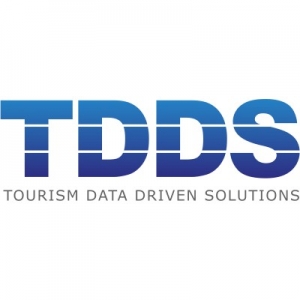From the last report published by the UNWTO (World Tourism Organization), the contribution of the tourism sector to the achievement of the United Nations Sustainable Development Goal 5 – Achieve gender equality and empower all women and girls becomes evident.
In this regard, many are the destinations and companies that contemplate in their strategies the provision and development of a sustainable tourism model in all its aspects. However, not everyone is clear about what they have to do to move from strategy to action in terms, for example, of the well-known SDGs (Sustainable Development Goals).
Here is an example on how to start, for now, with one of them: SDG 5.
The UNWTO report, like many others, is another starting point to highlight the situation of women in the workplace. This being the second edition of the report published in this year 2019, the main data regarding the role of women in the tourism sector are the following:
- Women constitute a large proportion of the tourism workforce.
- Women are well represented in service and office jobs, but are underrepresented at professional levels.
- Women who work in tourism usually earn between 10% and 15% less than their male counterparts.
- The tourism sector has almost twice as many women employed as other sectors.
- One in five Tourism Ministers worldwide are women.
- Women represent a much higher proportion of self-employed in tourism than in other sectors.
- A large amount of unpaid work is being done by women in family tourism businesses.
And knowing this data in the digital age in which we find ourselves, we have no choice but to take action.
To begin, we can take as a reference the report cited at the beginning of this post and analyze in detail the main key conclusions highlighted in it:
Conclusion 1: Is my destination or my company contributing to the promotion of equality through retributive systems attempts, supports the fight against sexual harassment and / or promotes the hiring of women in high-level jobs? Any of these actions would help women working in the sector do it in a decent way. For example, a very specific case in Spain is Focus On Women, a tour operator created with the aim of enhancing and increasing the visibility of women around the world through travel. The Organization focuses on trips that allow women travelers to meet other women and learn about women from around the world, offering their female clientele tours in Africa and the Americas.
Conclusion 2: that a country has a friendly legal environment to the general business activity of women means that there is an increase in women’s participation in the labour market and economically empowers it. This conclusion is directed more at the Governments of the different countries. However, companies and entities have to “lobby” for this to really happen.
Conclusion 3: Is my destination or company investing in training on social skills and raising awareness about available training opportunities, as well as training in gender equality? For example, for this conclusion we find La Fabulous Tourism Academy, based in the United Kingdom. An online teaching platform that supports women who want to grow in the tourism sector and become entrepreneurs. It offers an 8-month paid online training program, open to women around the world.
Conclusion 4: incorporate gender equality considerations into national tourism policies and plans, including committing sufficient human and financial resources to ensure their full implementation.
In this case, many destinations and companies in the sector have strategic plans for 3 and 4 years and a related action would be to include gender equality among their strategies.
Conclusion 5: Tourism from its political and social component must contribute to women’s empowerment. And in this sense, there are many messages to be launched so that women stop seeing tourism as a complementary form of income or additional work.
Conclusion 6: through tourism we have the ability to increase the participation of women in training on digital technologies in the sector itself.
Conclusion 7: Strengthen the ability to have data on the tourism sector disaggregated by gender and use them to promote gender equality and the empowerment of women, is another essential action that can be worked from a destination or company.
Likewise, other actions may be: reviewing current employment policies within my Organization, supporting women entrepreneurs, having a leadership and empowerment policy specifically for women, etc.
As you can see, there are many steps that can be taken to support gender equality in the tourism sector and continue joining efforts aligned with the United Nations 2030 Agenda.
Do you dare to start with any of these actions?




Leave a Reply
Want to join the discussion?Feel free to contribute!